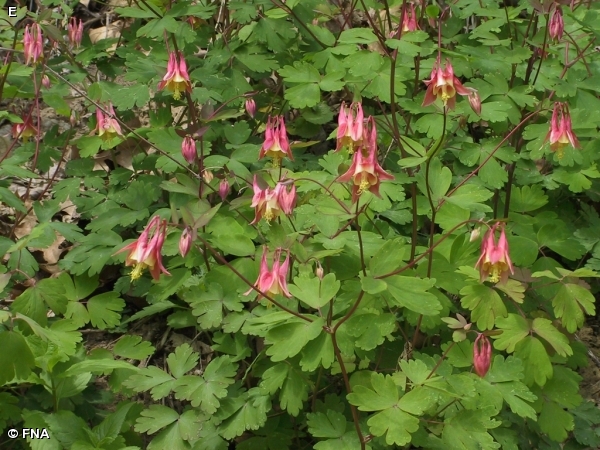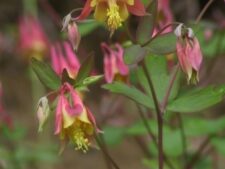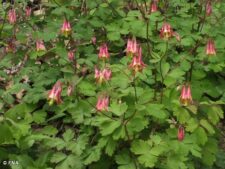
This is one of our most beautiful native perennial wildflowers. The slender stems grow up to 3 feet tall. Each of three leaflets is further divided into three lobes (D). The nodding flowers are up to 2 inches long. Five red sepals cover 5 red and yellow petals, each with a nectar spur at the top (A,B). A bundle of yellow stamens protrude below. The fruit is shown in image (F). An underside view of the flower is shown in image (G).
On steep north and east-facing slopes, flowering from April to June. In Fontenelle Forest, uncommon along History Trail overlooking Spring Hollow. At Neale Woods, uncommon off Neale Trail, overlooking the pond.
The Omaha and Ponca crushed the seeds to make a fragrant paste, which they applied to their clothes. Powdered seeds were also used for medicinal purposes. Prince Maximilian, a German explorer, documented seeing these flowers when he visited the fledgeling community of Bellevue on the 3rd of May 1833 on his way up the Missouri River to visit the Mandan Indian tribes in what is now North Dakota. Columbine still grows in the same area 175 years later. One of these images (D) was used for the cover of the FNA book, Field Guide to the Wildflowers – Fontenelle Forest and Neale Woods.
The content of NatureSearch is provided by dedicated volunteer Naturalists of Fontenelle Forest who strive to provide the most accurate information available. Contributors of the images retain their copyrights. The point of contact for this page is: Roland Barth.






